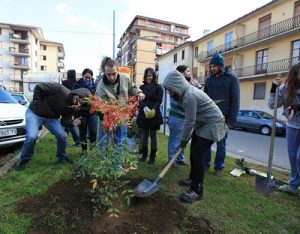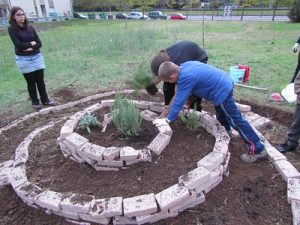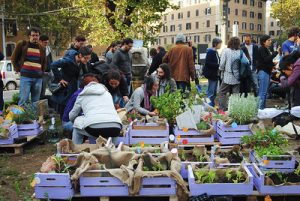STUDENT EXAMPLE: Guerrilla Gardening – The world in bloom
Jess Baker

“Spaccanocelle-guerrilla gardening Avellino il 13/11/11” by Guerrilla Gardening is licensed under CC BY-NC-SA 2.0
Guerrilla gardening is described as ‘the act of gardening on land that are no longer cared for.’ It has the aim of improving the environment or producing vegetables or flowers for people to use and enjoy. The art involved in designing the garden encourages a sense of community by providing food supplies to those that need it as well as celebrating the beautiful creations made by the gardeners. Other purposes of the art include political and social interests which provides a peaceful form of activism.

The themes present in the art of guerrilla gardening include transforming natural resources and community. The first theme of transforming natural resources is present in the natural process of guerrilla gardening. The effort and work evident in all 3 images below capture a sense of community. Teamwork is required to achieve this goal. Guerrilla gardening can therefore be seen as a bonding experience between communities and cultures by bringing people with the same passion together. This will have additional impacts for the community, such as an improvements in happiness and mental health.

All three images are from the Italian Guerrilla Gardening community, taken in 2011. This particular community began in 2006 thanks to a group of young people from Milan. They describe themselves as a group of green enthusiasts that decided to positively interact with the urban space through small demonstrative acts that they call ‘green attacks’. With this information, it provides valuable context to these images – we can see these ‘green attacks’ being demonstrated and the strength of community in Italian guerrilla gardeners.
Guerrilla gardening is important as a way of changing one’s community for the better. The simple act of planting flowers and working together is a prime example of how a community can have so many impacts on all counts and proves to be an aspiration as to what we can all do in improving our world.

